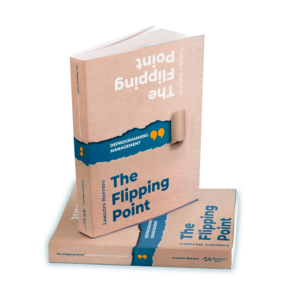 For me, the most damaging use of the employee engagement framework is the widespread one that states that ‘engagement’ predicts productivity. A poorly engaged workforce (whatever that may mean) will have (pick a score), a 15 or 20 percent, or more, decrease in productivity. So, boosting engagement will boost productivity. And this is good. If productivity is what you are aiming for.
For me, the most damaging use of the employee engagement framework is the widespread one that states that ‘engagement’ predicts productivity. A poorly engaged workforce (whatever that may mean) will have (pick a score), a 15 or 20 percent, or more, decrease in productivity. So, boosting engagement will boost productivity. And this is good. If productivity is what you are aiming for.
This model reduces human interaction and the collective action of a company, for example, to a machine with inputs and outputs. More engagement, or more satisfaction here, is not good in itself. It’s only good in so far as it produces more. Years ago, I was struck by the apparent seriousness of a 2012 business book entitled: ‘Contented Cows Give Better Milk: The Plain Truth about Employee Relations and Your Bottom Line’ [1]. Unchallenged, and also praised as a bit of fun, it was telling the truth about many corporate approaches and a great deal of the HR and consulting industry. We want a more engaged workforce (pick a definition) because we want more productivity, more milk. Not because it may be good in itself, because we want people to be fulfilled by the job, because we wish that satisfaction to be part of what working here is about. No, It’s the milk stupid. The fact that not many people have shouted, loudly, about this insulting view of human nature, tells us that in the area of management of organizations, we can still get away with murder.
The single indicator, single joystick,
is absolute nonsense
I am not against scores or indicators per se. I understand that, particularly in a large organization, that may be the only way to put some order to complex data. I am against a single indicator when it comes to ‘explaining culture’. The single indicator, single joystick, is absolute nonsense. As I said before, many people may push back and say that this is not how it works, that they always take into account other data. Great. I hope so. But this is not always my experience, having been part of many conversations about the single ‘employee engagement score’ and how good or how dreadful it was or is.
Extract taken from my paper: Corporate Love Affair With A Thermometer: Employee Engagement Surveys – read and download full paper here [2].
_____________________________________________

The industry of Employee Engagement (and there is a big one) says that companies with high employee engagement (as measured by some kind of artificial tool) are more successful. And produces ‘studies’ to prove it. Employee engagement is clearly portrayed as the reason for success, so the path is clear: how can we get more of it? My view is that success creates employee engagement, not the other way around. If you want high employee engagement, run a successful organization. I know it’s rather inconvenient to think this way.
The book The Halo Effect (2014) by Phil Rosenzweig [3] opened my eyes to this. I would put this book in the list of obligatory reading to anybody in management. The subtitle of the book is explicit: ‘and the Eight Other Business Delusions That Deceive Managers’. Rosenzweig quotes the case of the UK retailer Marks and Spencer, a company which at some point scored at the top in employee engagement rankings. Then a terrible year in business performance came up and employee engagement scores went down significantly. Not a single iota in benefits, programmes, employee care, or anything had changed. Just abysmal market performance.
Extract taken from my book The Flipping Point- Deprogramming Management. [4]
